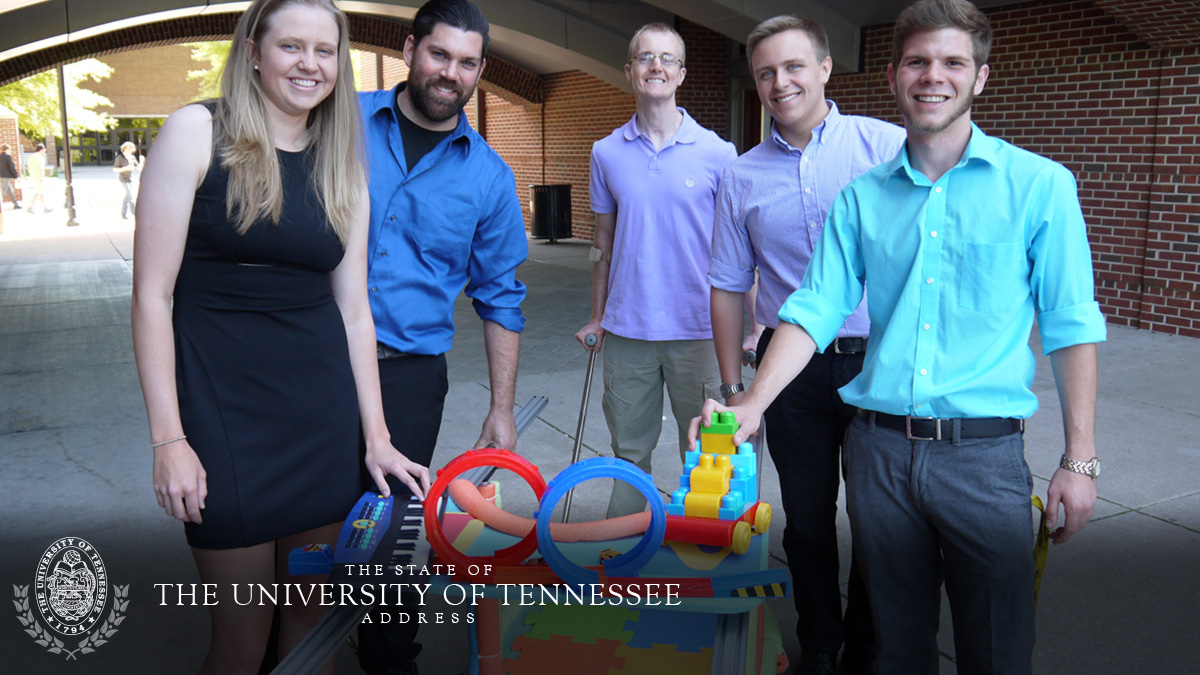UT Chattanooga Students Engineer Impact
A teenager with muscular dystrophy can move around school easier, and a 3-year-old boy could adjust more readily to prosthetics, thanks to engineering students at the University of Tennessee at Chattanooga.
The 10th Annual Assistive Design Showcase at UTC in 2015 highlighted engineering projects that gave students hands-on experience in fulfilling families’ needs.
“We’d made designs for class before, but that was as far as it went. This was the first time we had the chance to build those designs,” said Mitchell Rayl, a sophomore chemical engineering major from Lakeland, Tennessee.
One five-member student team worked to design and build fun parallel bars that would encourage an active, 3-year-old boy to do physical therapy to improve his mobility with his prosthetics. He was born missing parts of his four limbs.
“We learned that even when you plan, there is nothing you can do to prepare for unexpected challenges,” said Austin Stone, a sophomore electrical engineering major from Hixson, Tennessee.
Another team of UTC students designed an assistive device to help a 14-year-old boy with limited personal mobility maintain his independence. While the boy used a scooter for getting around school, he needed help walking to the restroom and standing up and sitting down. The team built a cane-like device out of aluminum and riveted it together. That student project won a Certificate of Excellence for Most Outstanding Project in the showcase.
Hector Gutierrez, a Cleveland, Tennessee senior mechanical engineering major, looks forward to his career and the prospect of getting to do work that changes lives.
“I think that’s an important idea,” Gutierrez said, “that we can become engineers and create things that actually help people and make the world better.”

